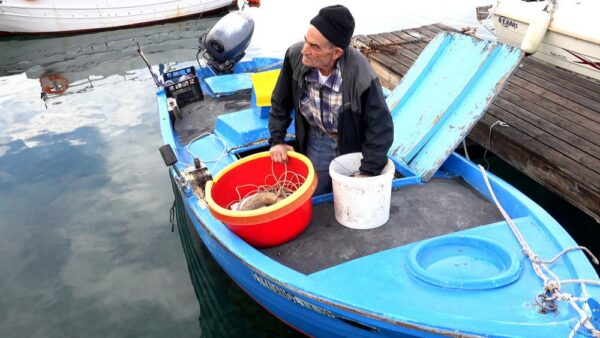Surrounded by seas, Crete has always had trade relations with other ports in the Mediterranean. Αlthough it could develop its fishing industry, the Cretans focused mainly on its fertile inland and livestock farming as their main source of wealth. The people by were mainly amateur fishermen. We can find professional fishermen at the old harbor, the harbor of Nea Hora and in other ports outside the city.
Nets and longlines were used for fishing. The nets used to be made from cotton and after fishing they had to be spread out to dry. Today nets are synthetic and easier to use as they are lighter and more durable. Longlines were a set of many hooks that were tied along a long thread called a “mana” (meaning mother in greek).
The longline was kept in baskets with the hooks fixed on a cork strip peripherally on the rim of the basket. Fishing nets and longlines were submerged in the sea in locations where the fishermen knew from experience that were fishing grounds. The fishermen would drop nets and longlines at the fishing grounds they knew. At dawn they would return to the spot where they had left them, which they could find with the help of buoys floating on the surface of the sea, tied to the two ends of nets and longlines. They dragged their catch on the boat and returned to the port.
In the past, an excellent knowledge of coastal shipping was required in order for the experienced fishermen to locate the fishing grounds they could find with the help of fixed points on the land which they marked in their mind. Nowadays with GPS satellite technology things are much easier and the old experience of coastal shipping survives only to few remaining romantic fishermen.
